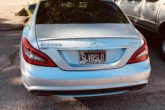
As one ages, is part of the genetic process they become more impatient and cranky?
The Case Against Senior Rates
Having listened to senior citizens argue/debate/demand for multiple decades at many municipal government Council meetings their entitlement to low rates, I feel I am nearing the point like Howard Beale (Peter Finch) in the Academy Award-winning 1976 movie, “Network.” (Click here) for his penultimate line, “I am mad as hell, and I am now going to take it anymore.” The movie’s YouTube video clip is 3 minutes and 49 seconds long. It is hilarious. It is also amazing how little the world has not changed in 47 years.
Seniors consistently maintain that they are on a fixed income, don’t have the money, and that they continue to pay property taxes for schools from which they derive no economic benefit as their children are grown. Thus, they are entitled to low rates for the consideration of the taxes paid. They often pack ill-conceived Golf Course Advisory Boards to lobby for low rates under the justification they are independent voices for all golfers.
In May, I secretly shopped a golf course that has an unlimited senior pass rate for $675. For an additional $110, you can purchase a permanent tee time for 365 days. The fair market value, based on 260 playable golf days, is about $1,550. There are 114 season passes issued. They generate 4% of the revenue and consume 15% of the rounds. On this weekday morning, most cars in the parking lot were Mercedes, Audi, Lexus, Cadillac, Lincoln Continental, and Jaguars. (click here)
The average senior pass holder pays $5.72 per round, where the cost to produce the round of golf for maintenance only is $13.57. The cost to produce the round of golf, including fringe benefits for administration, maintenance, and the golf shop, is $31.93. The rack rate 18 hole weekend green fee is $35. Someone has to explain to me how spending $31.93 for the opportunity to earn $5.13 per golfer is economically justified.
I am humored how several nights earlier, three women, one male millennial, and over 50 male citizens with an estimated age of 65 turned out at a Town Hall meeting to present the case the municipality should underwrite on their $287 million annual budget a $6 million clubhouse for them with only a nominal increase in golfer fees in which the following enhanced amenities should be added:
| Amenity | % |
| Banquet Facility | 73.33% |
| Snack Bar | 71.11% |
| Sports Bar | 66.67% |
| Large Hall Combining Restaurant – Pro Shop | 53.33% |
| Tournament Pavilion | 37.78% |
| Full-Scale Restaurant | 28.89% |
| Top Tracer Range Tracking | 26.67% |
| Weddings | 24.44% |
| Conference Center | 22.22% |
| Indoor Golf Simulators | 22.22% |
| Business Meetings Rooms | 20.00% |
| Fitness Facilities | 20.00% |
| Bocca Ball Area | 6.67% |
| Corn Hole Playground | 6.67% |
| Pickleball | 6.67% |
| Ladies Restroom | 6.67% |
| Putting Course | 4.44% |
| Pilates Studio | 2.22% |
| Beginner’s Programming Clinics | 2.22% |
| Outdoor Patio | 2.22% |
| Outdoor Shelter | 2.22% |
| Housing on Site | 2.22% |
The City was recently downgraded by Moody’s, has $20 million in deferred road repair and $15 million in deferred bridge repair. Many of the residents in this municipality have a household income of less than $40,000.
There is simply no justification for offering the wealthiest segment of the population significant discounts to play golf at the expense of 92% of the citizens who don’t play golf.
As one Michigan Park Commissioner shared with me, “If the senior citizen has not been able to accumulate sufficient funds after six decades of living to play golf, I should not be responsible for bailing their butt out for their lifelong fiscal negligence.”
While the Commissioner’s statement, a golfer, is a little strong, the point is on target.
Though I am sympathetic to the argument that senior rates generally apply only on weekdays when others are working, and the course would be vacant without the lower rates, I counter that seniors have such an abundance of leisure that the golf course becomes their office in retirement. What else are they going to do? I am confident their domestic partner doesn’t want them hanging around the house all day.
I teasingly suggest the municipal golf courses that operate under the General Fund or in an Enterprise Fund should apply for a 501-C organizational structure under the business banner of “Senior Day Care Centers.”
Here is a better option.
First, to qualify for a senior rate, the golfer should be 65 years or older. I believe at least 67 is the proper age to establish senior rates, but that would never politically pass.
Second, there is no economic justification for offering an unlimited season play pass. Someone always loses. When the golfer uses it far beyond the calculated breakpoint or when the individual buys the pass and doesn’t use it.
Should a golf course be foolhardy enough to offer an unlimited play pass, the following should be the rack rate times 33% the number of playable days discounted by 25%.
Better yet, eliminate season rates as they do in the dominant senior community of Phoenix at the Botanical Garden and the Frank Lloyd Wright Museum.
The Case Against Springs Rates
A fundamental business rule is that demand for a product should determine its price. The higher demand, the higher the price. Demand for golf in cold-weather climates is highest in the Spring.
Yet, nearly all golf courses offer lower spring rates under the justification that the course is not in optimal playing condition. With grass requiring above 50 degrees to germinate, admittedly, the golf courses are not in prime time condition.
Do the golfers care? If the summer rates are implemented in April, do you think the golfers won’t play until June?
Having not played for several months, golfers are chafing at the bit to get started. A 55-degree day in April feels a lot warmer than a 55-degree day in Fall. There is an analogy about the bears vs. the squirrels. In the Spring, the bears are coming out of hibernation and are hungry. In the Fall, the squirrels are gathering up the nuts for winter. Bears will chase the squirrels away.
 The case against Spring rates is every round played is at a discount. For the senior, the rates can often be at a discount of 50% of the summer prime time fee.
The case against Spring rates is every round played is at a discount. For the senior, the rates can often be at a discount of 50% of the summer prime time fee.
If a golf course eliminates, Spring rates there will surely be some golfers who will grouse. But with the pandemic demand, there are likely to be two golfers willing to pay the higher rate for that time.
It is just part of the DNA of a golfer to complain about rates. I have yet to meet a golfer who has said to me; “I didn’t pay enough for golf. They should raise their rates.”
I also don’t buy into the argument that if a facility does not offer Spring rates, their customers will flock to other courses. Surely you will lose some, but if you raise your rates 25%, you can lose 33% of your customers and generate the same round. More than likely, the competitors, when observing your prudent practices, will adjust their rates quickly upward.
The game is to maximize revenue, not rounds.
The Answer:
I constantly remain amazed at the faux justification provided by golf course operators to discount their rates. Golf remains one of the most inexpensive recreational activities. With demand continuing to soar from the pandemic, there is a window of opportunity to raise the buoy in the lake permanently.
Both Senior and Spring rates are equally bad. Unsure? We had a client this Spring raise their senior age from 60 to 65 and eliminated spring rates when they opened April 1. The results? Their revenue was up $181,000 ($40,222 per facility).
They were elated, and you will also be thrilled at the new source of revenue.

Kurt Albertson
Great points and some valuable insight, Mr Keegan